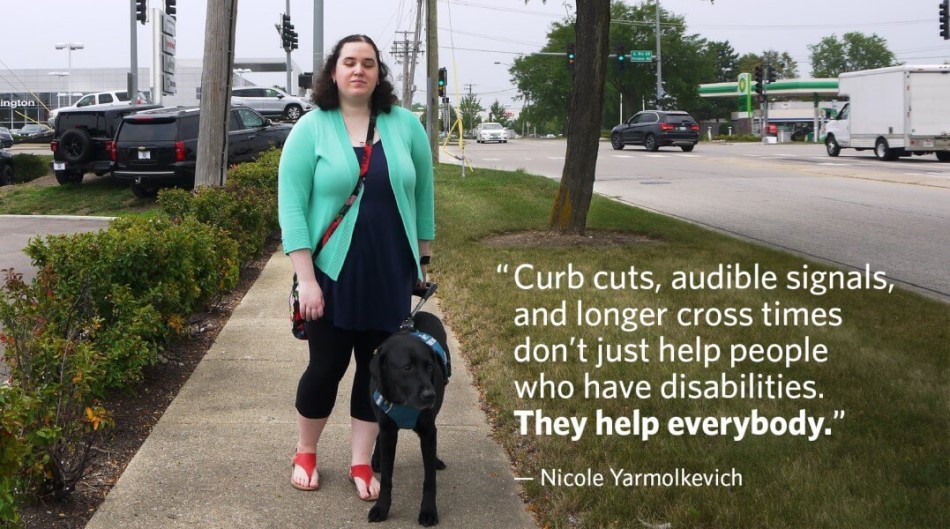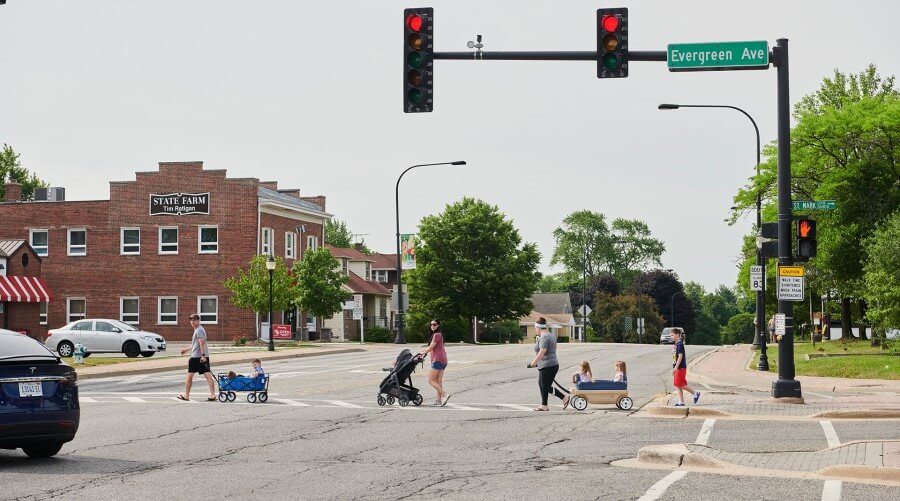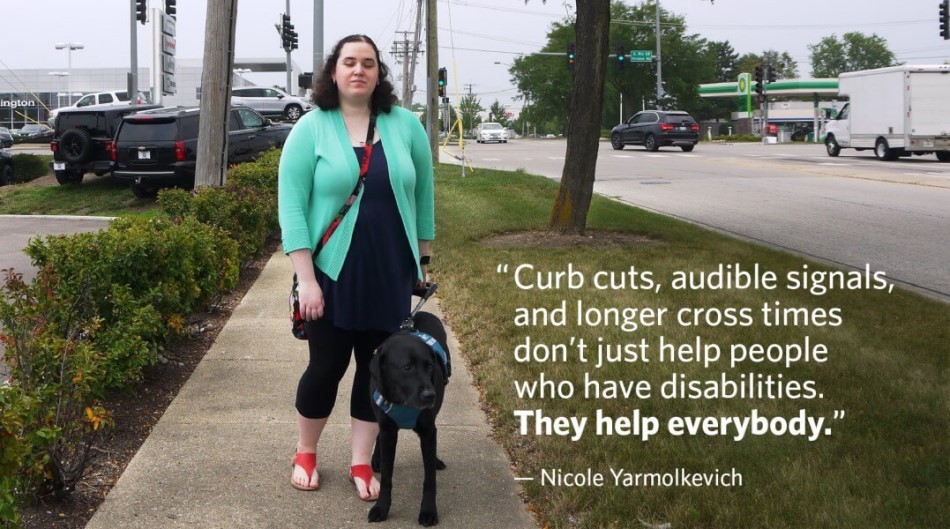
Accessibility is vital to creating an inclusive and thriving northeastern Illinois. Everyone in our region — including people with disabilities — needs to be able to get to work, visit with family and friends, access the goods and services they need, and enjoy all the region has to offer — dining, shopping, arts, sports, and recreation.
That’s why the Chicago Metropolitan Agency for Planning (CMAP) is implementing a program to help communities in northeastern Illinois improve accessibility for their residents and visitors with disabilities.
In particular, the program will equip local governments with the resources they need to improve their compliance with the Americans with Disabilities Act (ADA), including completing self-evaluations and transition plans — two requirements of the law. As a result, CMAP will help the region take important steps toward creating a transportation system that works better for everyone.
On this page, you can find the latest information about the program and resources to improve accessibility in your community. For questions, email accessibility@cmap.illinois.gov.

